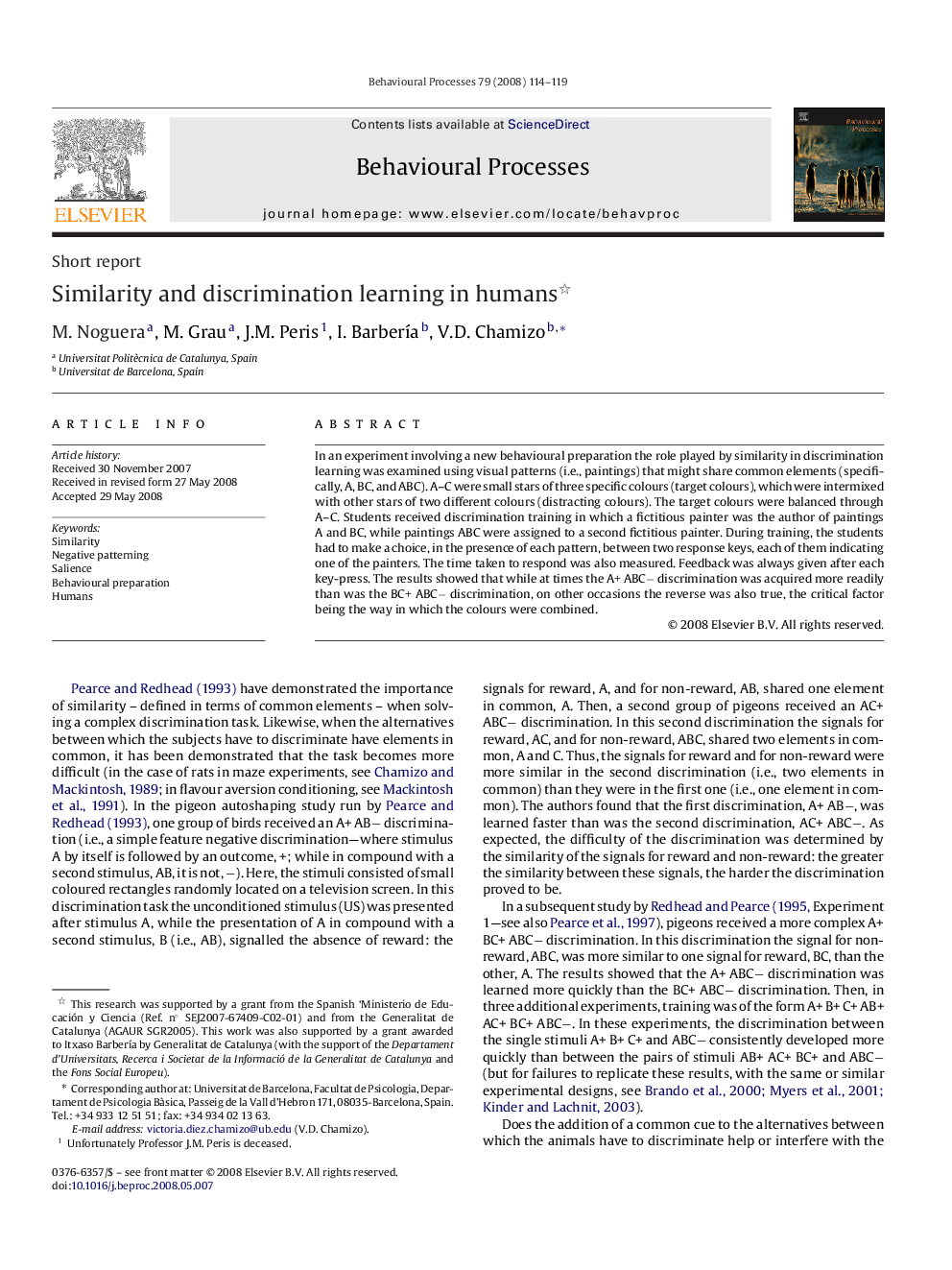| Article ID | Journal | Published Year | Pages | File Type |
|---|---|---|---|---|
| 2427753 | Behavioural Processes | 2008 | 6 Pages |
In an experiment involving a new behavioural preparation the role played by similarity in discrimination learning was examined using visual patterns (i.e., paintings) that might share common elements (specifically, A, BC, and ABC). A–C were small stars of three specific colours (target colours), which were intermixed with other stars of two different colours (distracting colours). The target colours were balanced through A–C. Students received discrimination training in which a fictitious painter was the author of paintings A and BC, while paintings ABC were assigned to a second fictitious painter. During training, the students had to make a choice, in the presence of each pattern, between two response keys, each of them indicating one of the painters. The time taken to respond was also measured. Feedback was always given after each key-press. The results showed that while at times the A+ ABC− discrimination was acquired more readily than was the BC+ ABC− discrimination, on other occasions the reverse was also true, the critical factor being the way in which the colours were combined.
